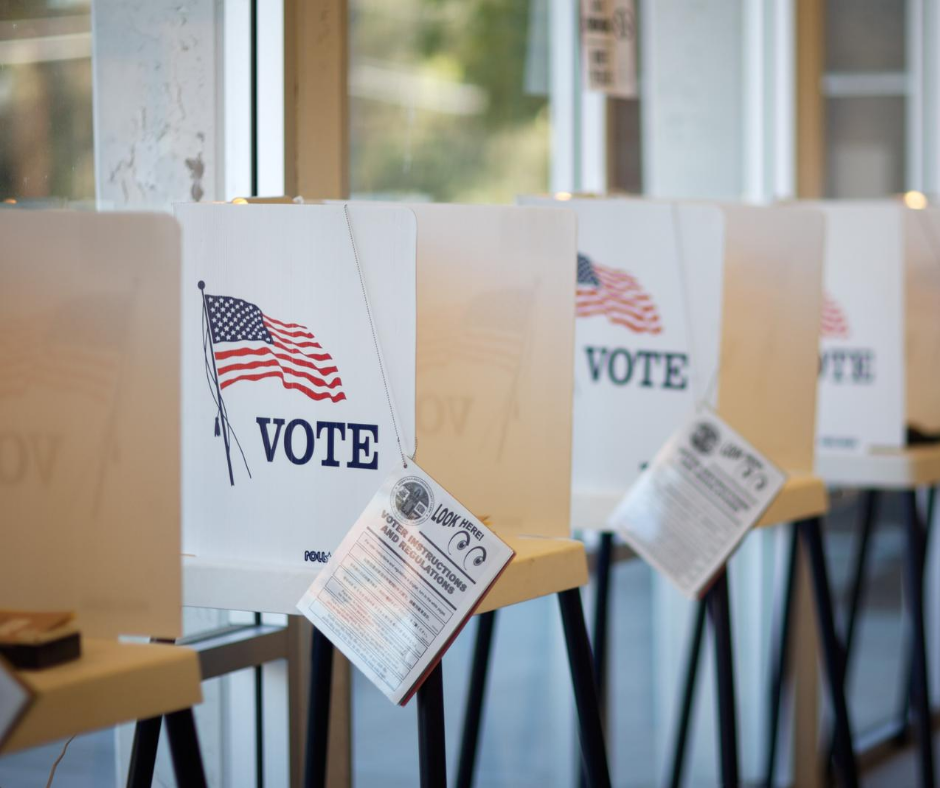1) This election is critical!
This fall’s election is a fork in the road moment that only comes once in a generation. When we come together to pitch in for each other, no matter what we look like or what we’ve been through, we are greater than fear.
But today a handful of corporations undermine all of us. Corporations like Chevron, Uber, and Veritas keep raking in profits, while they take advantage of people who want to earn a decent and secure living, refuse to contribute to the schools where our young people learn, and tear holes in the fabric of our neighborhoods. They divide us against each other by blaming Black and brown people for our problems–hoping we won’t notice so they can continue to reap the benefits of our contributions and hard work.
When we know what we need to do to be able to vote, given the changes and challenges of the pandemic, we will restore the safety and the opportunity we need for our communities to be whole.
If you’re not yet registered to vote, it’s quick and easy to register online!
2) All registered California voters can vote by mail.
This year, all registered California voters will receive a ballot in the mail. Expect your ballot to arrive at least a month before the November 3 election. You can cast your vote on or before Election Day by simply putting your sealed ballot back in the mail or in a ballot drop box!
3) You can also vote in-person instead.
There are all sorts of reasons you might need to vote in person rather than by mail. Maybe your vote-by-mail ballot was sent to an old address, maybe you need a ballot in a different language than the one you received, or maybe you have questions about how to fill out your ballot.
If you would rather vote in person, you will be able to. You can either bring your vote-by-mail ballot to a polling location, or if needed, you can request a ballot at your polling site. Every polling location in the Bay Area should have ballots available in multiple languages.
4) Your voting location might be different this year.
Staying safe in this pandemic may mean offering new ways to vote in person.
Here at Bay Rising, we’ve joined with the Million Voters Project to advocate for additional voting locations to ensure that every Californian has ample access to socially-distanced voting options. It’s time for us to think outside the box and start offering creative options, including drive-through voting and new polling locations in places with space and airflow, like open-air parking garages.
As November approaches, you’ll want to check your local county registrar’s website to get the latest information on your in-person polling location.
5) Ballots might be available in multiple languages, including mail-in ballots or translated reference ballots.
Depending on where you live, you may be able to get a votable ballot or a reference ballot in multiple languages. Language assistance varies by county and precinct.
Check with your county elections office to see what resources are available and to update your language preference information:
If you live in a covered county or precinct, you can ask for translated materials when you vote in person or you can ask for translated materials to be sent to you by mail.

6) Double-check your registration information as soon as possible.
You can check your voter registration information online with just a few clicks. This information will determine where your vote-by-mail ballot gets sent and whether you receive translated materials by mail, so double-check that your address is up-to-date and your language preference is accurate.
If you need to change your address or language preference, you can simply re-register using the same link.
7) You can lobby your county to request more voting locations.
The state has already set minimum numbers of voting locations, and it’s up to the counties whether they want to go above that requirement. The more voting locations, the safer and easier it will be for everyone to shape the future of our communities by voting.
Contact your local elections office (see above) or county board of supervisors to make your voice heard.
8) Sign up to be a poll worker, especially if you speak more than one language.
Elections officials are facing challenges this year in finding enough workers to staff polls. Check with your local elections office (see above) for how to sign up!

9) Make sure your friends and family are registered!
Is your community registered to vote? Text them, call them, or host a virtual registration party! You can walk them through the quick and easy process here.
10) As always, safety first.
Masks and social distancing are critical to keeping our communities safe. Make sure to wear a mask when you go to vote, keep six feet between you and others, and wash your hands as often as possible.



